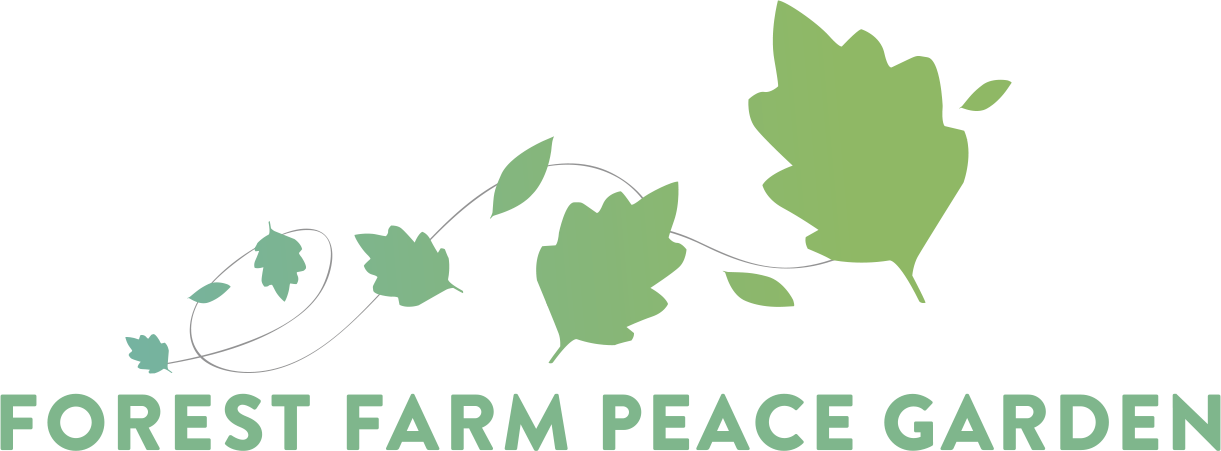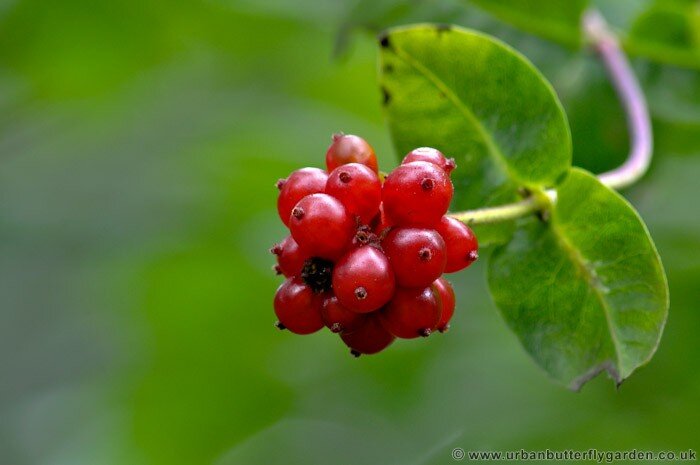Honeysuckle flower
Honeysuckle berries
Common Name: Common Honeysuckle
Genus & Species: Lonicera periclymenum (L.)
Family: Caprifoliaceae
Other Names: European Honeysuckle, Woodbine
Similar Species: The other species you are likely to come across in the UK are Fly Honeysuckle (Lonicera xylosteum), a native species and Japanese Honeysuckle (Lonicera japonica) an occasional garden escape.
Range and Habitat: Honeysuckle grows in woodland and along hedgerows, weaving through shrubs and trees. It is common and widespread throughout the British Isles and is native to much of Europe, North Africa, Turkey and the Caucasus. It is found as far north as southern Norway and Sweden.
General ID: Growing to 7 m (23 ft) or more in height, it is a vigorous clockwise twining climber, with deep green oval leaves with no or very short stalks arranged in pairs opposite each other. Both native honeysuckles are deciduous although L. periclymenum occasionally keeps its old leaves over winter. L. japonica is an evergreen. Flowers cream, trumpet-like flowers which turn yellow-orange, often with a red or pink flush and exuding a sweet, heady fragrance, particularly on warm summer evenings. Fruits are glossy clusters of red berries which ripen in autumn.
For food… The fruits are poisonous and should not be eaten. However, the flowers are edible, Children (of all ages) suck the base of the flowers to extract the nectar – hence the name ‘honey-suckle’ and they can be added to salads, jellies or teas.
For healing… Common Honeysuckle has expectorant and laxative properties. A syrup made from the flowers has been used in the treatment of respiratory diseases whilst a decoction of the leaves is considered beneficial in treating diseases of the liver and spleen. It is used as a mouthwash for ulcers and is considered to be a good ingredient in gargles.
The flowers are antispasmodic, astringent, diuretic, expectorant, febrifuge and sudorific. The fruit is emetic and cathartic. The herbage is used as a cutaneous and mucous tonic and as a vulnerary. It is also diaphoretic. The leaves are laxative and slightly astringent. The seed is diuretic. The bark is anti-catarrhal, depurative, diuretic and sudorific.
In traditional Chinese medicine, Lonicera japonica is called rěn dōng téng (忍冬藤) literally "winter enduring vine") or jīn yín huā (Chinese: 金銀花; literally "gold-silver flower"). Alternative Chinese names include er hua (二花) and shuang hua (雙花), meaning double-[colour] flowers. In Korean, it is called geumeunhwa. The dried leaves and flowers (Flos Lonicerae Japonicae) are employed in traditional Chinese medicine, being used to treat fever, cold-related headache, cough, thirst, certain inflammation including sore throat, skin infection, and tumour necrosis. It is likely that both species can be used interchangeably.
In culture… Honeysuckle has been used to make beautiful walking sticks which were once popular with Scots music hall performers. They were created as the honeysuckle entwined itself around branches, causing the branches themselves to become twisted.
It was once believed that if honeysuckle grew around a home’s entrance, it would bring good luck and stop any evil spirits from entering. It has also long been considered a symbol of fidelity, and in Victorian times young girls were banned from bringing honeysuckle into the house because it was believed the strong smell would make them have suggestive dreams!
Indeed, the association with dreaming can also be seen in its reference in William Shakespeare’s play A Midsummer Night's Dream where he refers to woodbine/honeysuckle twice - "Quite overcanopied with luscious woodbine"(Act II Scene 1) and "So doth the woodbine the sweet honeysuckle gently entwine"(Act IV Scene 1).
For wildlife… Honeysuckle is hugely valuable to wildlife, supporting several species, many of which are rare. Butterflies, such as the White Admiral (Limenitis camilla) - which is in decline, rely specifically on honeysuckle, and it is also prized by bumblebees.Pollinating moths are attracted to the sweet scent of honeysuckle at night when it is strongest such as the Elephant Hawk Moth (Deilephila elpenor), or the Hummingbird Hawk-Moth (Macroglossum stellatarum) which can detect the scent of honeysuckle flowers up to a quarter of a mile away.
Birds, including thrushes (Turdus sp.), warblers (Sylvia sp.) and bullfinches (Pyrrhula pyrrhula), will also eat the berries when they ripen in late summer and autumn. The twined stems also make good sheltered nest sites for a range of small birds.
Dormice such as the native Hazel Dormouse (Muscardinus avellanarius) also rely on honeysuckle for both shelter and food. They use honeysuckle bark to build nests for their summer young, but also eat the sweet, nectar-rich flowers as a source of energy.
At FFPG… Honeysuckle can be found scrambling near the wild flower area!
Disclaimer:
This is intended for information only. FFPG, its staff, trustees and volunteers do not make any claim as to the safety or efficacy of plants listed for medicinal purposes and do not encourage the consumption or use of any of the plants listed herein. Anybody wishing to use plants for medicinal effect is advised to consult their medical professional.



